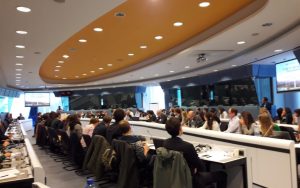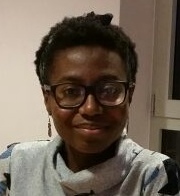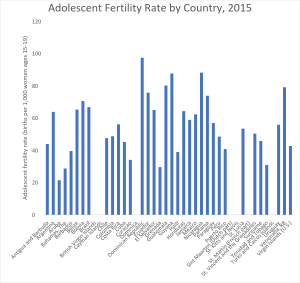Brazil is paralyzed by corruption. The fight against it is expensive and the Country doesn’t seem able to win the battle since many political exponents are involved in corruption. Bribery is at all levels and in all areas, but is particularly damaging the health sector. The anti-corruption program is a valuable instrument but the effects on health are conflicting

By Pietro Dionisio
EU health project manager at Medea SRL, Florence, Italy
Degree in Political Science, International Relations Cesare Alfieri School, University of Florence, Italy
Brazil Crippled by Corruption
For the last few years, the Brazilian society has been voicing their collective dissatisfaction with continual cases of endemic corruption, especially the ones emanating from the political bodies. After finally ascending to power in the early 2000’s, the Labor Party was expected to bring a higher level of ethics to the way government (at all levels; federal, state, municipal, etc.) conducts itself. Unfortunately, too many cases of alleged corruption followed many of the politicians who had vowed to clean up the Brazilian political process. To that effect, a significant percentage of the population felt betrayed by the Labor Party and their allies, since the expectation was for a modern, transparent, ethical government as the party waved in political campaigns. The political opposition to the labor party obviously exploits the public cases of corruption to their benefit. This was the case of the “Brazilian Democratic Movement Party” leaded by Michel Temer. But corruption still is damaging the Country.
It is just a few weeks since Luis Inacio Lula da Silva, the former Brazilian president has been condemned to nine years and six months for bribery in one of the “Lava Jato” investigations, the scandal of the Petrobras black oil giant – in which he was accused.
The investigation into corruption at the state-controlled oil company Petrobras has led to more than 100 convictions over the past three years and among the condemned are some of the country’s most influential businessmen, Temer included (the current Brazilian president). As an effect, owing to Petrobras’ role as the country’s biggest investor, Brazil’s spending policies, including for health, shrank dramatically. In December 2015, one year after the scandal outbreak, the industrial production of instruments and materials for medical and dentistry, as well as optical supplies, decreased by 14.9%, as compared to the previous year, even as the number of workers employed in the sector showed a 2.2% drop from January to December 2015.
Much like Petrobras scandal, the “Fatura Exposta”, a bribery and money laundering case, has severely impacted the country. As the Authorities allege, bribes were demanded from companies seeking to sell medical equipment (including x-ray machines, prosthetics and CT scanners) to the national healthcare system. Purportedly, between 2006 and 2017 the offenders appropriated 10 percent of the total value of all contracts (some 300 million reals, or $95 millions). As such, while the system was on the verge of collapse in 2015 and 2016, a state of financial emergency was declared, whereby even funds to pay employees were lacking.
Owing to these circumstances, it comes as no surprise that on 13 December 2016, the Senate of Brazil passed a constitutional amendment, the so called “ Death Amendment”, that caps public spending for the next two decades. If implemented, the funding cuts will impact millions of Brazilians actually relying on its Unified National Health System. In a nutshell, as investments drop, barriers to the already limited right to health in Brazil are expected to increase in a vicious circle thwarting the much needed control of health threats like Dengue fever, Zika virus, HIV/AIDS, while restricting access to preventive services.
The Petrobras scandal and the current situation in Brazil are a lesson of how corruption can affect the public health sector, mining its foundations in terms of investment, quality of services and services supply.
The Brazilian system has some elements that favor corruption and moral hazard. As for the health sector, local bureaucracy employees, who are responsible for a wide range of activities (including, just for example, contracting hospital reforms, purchasing vaccines, and paying public servants’ wages, among other things), actually have several ways to embezzle public funds, while managing millions of dollars every year.
To address the problem, in 2003, the federal government introduced the Brazilian anti-corruption program that randomly draws municipalities to be audited concerning their use of federal funds. Auditors analyze municipalities’ accounts and documentation, and physically inspect public works and service delivery, to assess whether earmarked federal transfers are effectively spent according to their guidelines. Additionally, a set of anti-corruption laws were enacted. Among these, the “Brazilian Clean Company Act” of 2014 holds companies responsible for the corrupt practices of their employees and introduces strict liability for those offences, meaning a company can be liable without a finding of fault.
All these efforts have brought positive results. In fact, the anti-corruption program substantially reduced corruption within health transfers, while decreasing occurrences of over-invoicing, off-the-record payments, and of procurement irregularities such as participation of ghost firms or tailored terms of references to specific vendors. Disappointingly, according to a study by the Harvard University, the anti-corruption program has also produced some imbalances, including by making health indicators significantly worse. Relevantly, it reduced per capita hospital beds, immunization coverage, and the share of households with access to piped water, connected to the sewage network or with septic tanks. As a result, municipality budgets have substantially lost their federal transfers (between half to all transfers loss in a cross-sectional comparison over the baseline period, amongst low-procurement-intensity transfers).
This strange outcome could be in accordance with Huntington’s claim that local bureaucracies have more accurate information about the local demand for public goods and the quality of local suppliers. On the flip-side, the anti-corruption program has produced a slowing down of money circulation. When corruption works, money flows faster since there is no competition among different players and money allocation is extremely focused. When an anti-corruption program is implemented, the criminal action is cut at its root.
As such, it is likely that in the short run, the return to a competitive market would reduce the quality and quantity of goods available, though in the long run, this issue should recover due to the competition among different players.
In my opinion, the Brazilian puzzle should be solved now that the country is expected to exit recession by the end of current year. In this regard, the optimal design of capacity-building interventions to disseminate best practices among local procurement staff, and the analysis of the extent to which those interventions can improve public service delivery, are to be pursued as relevant strategies to limit the problem in the future.















